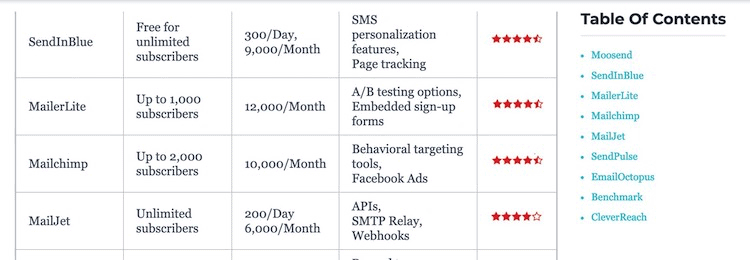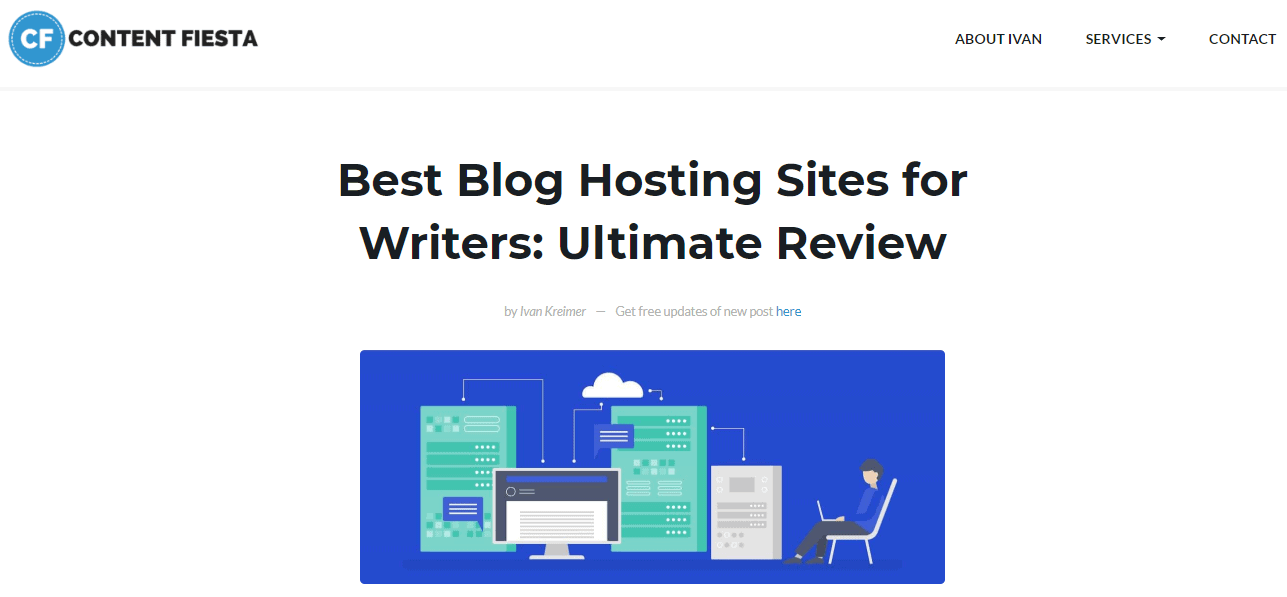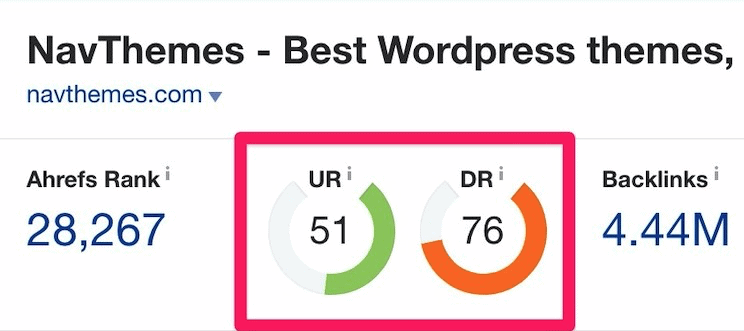Domain authority is one of those abstract ideas that are hard to grasp for beginner SEO practitioners. But once you understand that domain authority is directly correlated with organic traffic, everything becomes clearer.
Increase your domain authority, and you will grow your website. It’s that simple. And to do that, you need links—lots of them.
Need more #DomainAuthority? This article will teach you how to acquire it! Click To TweetHow you get those links, it’s a different question. There are hundreds of techniques that you can use to get links. From the dozens I have personally used, I can vouch for three tactics that have helped me grow my site to the thousands of monthly visitors.
In this article, you will learn how you can use these three tactics to start increasing the authority of your domain and get more organic traffic.
So let’s get started.
Write 10x Content

The days where you could run a piece of software that got you links from blog comments and “ezine” sites are long gone. Link building has become more complex than before, but not to the point where only big brands can get links.
There’s a term in the SEO world that summarizes the one element you need to have to build links and increase your domain authority for: linkable assets.
When you pitch to people (something you will see later), you pitch them your linkable asset. The better it is, the higher the chances you can get links and increase your domain authority.
From the many options available, one stands out in its effectiveness: 10x content. Rand Fishkin, the founder and former CEO of SEO tool Moz, coined the term, explaining that: “10x content is content that is 10 times better than the highest-ranking result for a given keyword(s).”
For a piece of content to qualify as “10x better” than the rest, Fishkin explains it has to meet specific criteria:
- It has to have great UI and UX which could be hard to achieve without the help of a UI company.
- It’s considered high-quality, trustworthy, useful, interesting, and remarkable (not all at once, but a combination of them).
- It has to have a different scope and detail from its competitors while still serving the same visitor or user intent.
- It has to create an emotional response, like awe, surprise, joy, anticipation, or admiration (once again, not all at once, but a combination of them).
- It has to provide comprehensive, accurate, exceptional information that solves a problem or answers a question.
- It delivers the content in a “unique, remarkable, typically unexpectedly pleasurable style or medium.”
- The copywriting is next-level engaging
In highly competitive markets like SaaS, where differentiation is crucial, it’s advisable to partner with specialized agencies like a SaaS content marketing agency. They bring expertise in crafting compelling narratives tailored to your product’s unique value proposition, ensuring that your messaging resonates with your target audience amidst the noise of competitors.
According to copywriting experts at Loganix, “Content needs better copywriting. Why? Not only does good copywriting keep people engaged and boost dwell time SEO metrics, it keeps them coming back and develops them as a brand promoter.”
The more of these criteria the content piece meets, the better the chances it will be genuinely 10x better than its competitors.
For example, Moosend developed a guide that compares the best free email marketing services. There are many guides like this one, but Moosend stands out from the rest thanks to its ease of use, detailed reviews, conciseness, and honesty.

I did something similar when I created a comparison of the best blog hosting sites for writers. Only a few guides offered this specific analysis for writers—most focus on blogging and small businesses.
The analysis done for each company is detailed and honest. That includes an open criticism of a popular company that everyone recommends, but that’s also known for its bad practices.

To start creating 10x content, you want to consider:
- Adding custom-made graphics and illustrations. Get a freelancer on Twine, Fiverr or Upwork to do it for you. It’s a small price to pay for a high return.
- Making the guide longer, but not exceedingly so. If you see there are ideas not being shared that should be said, add those in your piece.
- Add stories. This adds an emotional layer to your content.
- Fix your grammar mistakes. If possible, hire an editor to proofread and edit the piece for you. You can find cheap ones on Upwork. If you can’t, consider using Grammarly, which is cheaper than an editor and equally as effective.
- Add custom quotes or stats you generate. Ask experts for their ideas or run surveys in your audience and use the data gathered to create your content.
Leverage Relationships for Links and Traffic

Traditional link building campaigns used to focus on automation and speed. You plugged in search queries in a tool, and you were done. A few days later, you had dozens, if not hundreds of links pointing to your page.
Nowadays, the game is in the relationships you build and leverage in your industry. You may have the greatest linkable asset in your industry, but without the right contacts, it will be hard to build links to it.
My favorite way to build these relationships is through guest posting. Most often, guest posting—i.e., the act of posting in other sites as a guest—is seen as a way to get links and nothing more. Undoubtedly, the links you acquire through guest posting are more than worth the effort.

But beyond the quick links you build in the guest post, what truly matters is that you create a relationship with the editor of the site. Think about it this way: when you guest post, you provide value to the readers of the guest site.
You want to go beyond the post; think about how you can focus on the value you give to the editor and their audience. Once that idea is in your head, you will be able to increase the value of your guest posting and get much more than just a link.
When you make your pitch to the editor put the value the audience will get before anything.
- Adapt your article to the guest site’s style guide—which they should provide, by the way.
- Add links to their other posts, which helps them with their SEO.
- Share the article on your social media accounts—you can even share it with your email list.
- Have the editor publish a guest post on your site.
The more value you give to the editor, the better they will enjoy working with you. By the time you need a few links to your site—for example, you published a new linkable asset—the editor may be willing to help you out by promoting it. You can even consider exchanging links.
Beneath any successful guest posting campaign, the key lies in the authority of the domain. The higher the authority, the more you can increase your site’s authority.
To measure the authority of the guest site, run a domain in a tool like Moz or Ahrefs. The closer the number is to 100, the higher the authority, and so the more authority your website can get.

Start Cold Pitching (the Right Way)
By publishing 10x content and guest posts, you will be on the path of increasing your site’s domain authority. But to tie these two elements together, you need to run an email outreach campaign.
This tactic is also known as “cold pitching” because you are contacting “cold” people—strangers, in other words. To create a cold pitching campaign, you need to:
- Make a list of the sites you want to pitch to. If you are going to do guest posting, find sites in your industry that accept guest posting. Here’s a guide I wrote on how I got published on high-authority industry sites which explains the entire process.
- Find contacts. With the list of sites you want to pitch to, use LinkedIn InMail to find the right contacts for each site. Alternatively, you can use regular LinkedIn or read the “About Us” pages for each website.
- Find emails. Run each site and each contact name in a tool like Hunter to find their email address.
- Write the email. Your emails should be concise and clear.
- Schedule the email campaign. Use a tool like Gmass or Mailshake to send the emails on autopilot. Remember to send at least three follow up emails.
A cold pitching campaign takes time and some tolerance to rejection. You will be ignored; some may even tell you to stop emailing them. But as long as you are respectful and contact the right people with the right offer—a link request or a guest post opportunity—you will get positive answers. And those are the ones that matter.
Conclusion
If you care about growing your site’s organic traffic, increasing your domain authority should be your number one priority.
It’s a long-term process that requires building hundreds of links from high-authority domains. But with the help of these three tactics you have learned today, you will do so in no time. It’s only a matter of getting started.
The question is, are you going to do it? I’d love to hear your thoughts in the comments below.
Bio:
Ivan Kreimer is a freelance content writer for hire who creates educational content for SaaS businesses like Leadfeeder and Campaign Monitor. In his pastime, he likes to help people become freelance writers. Besides writing for smart people who read sites like NavThemes, Ivan has also written in sites like Entrepreneur, MarketingProfs, TheNextWeb, and many other influential websites.


The one of the main tactics that most of the SEO expert use in to increase domain authority is Create high authority do follow backlinks.